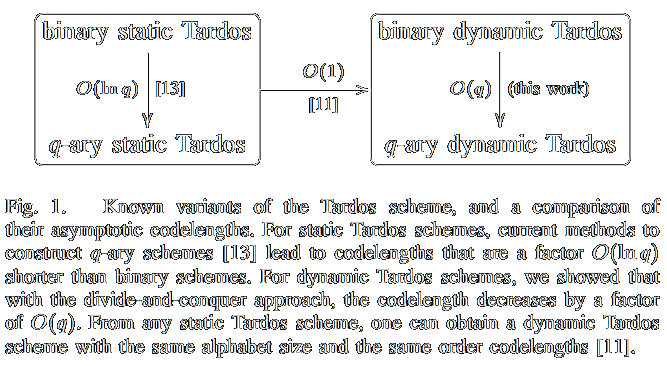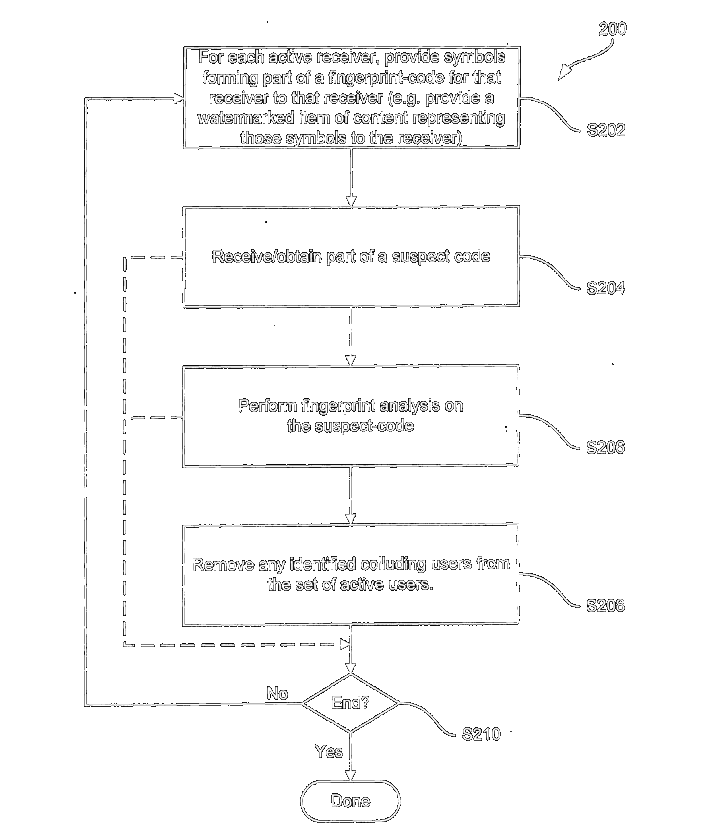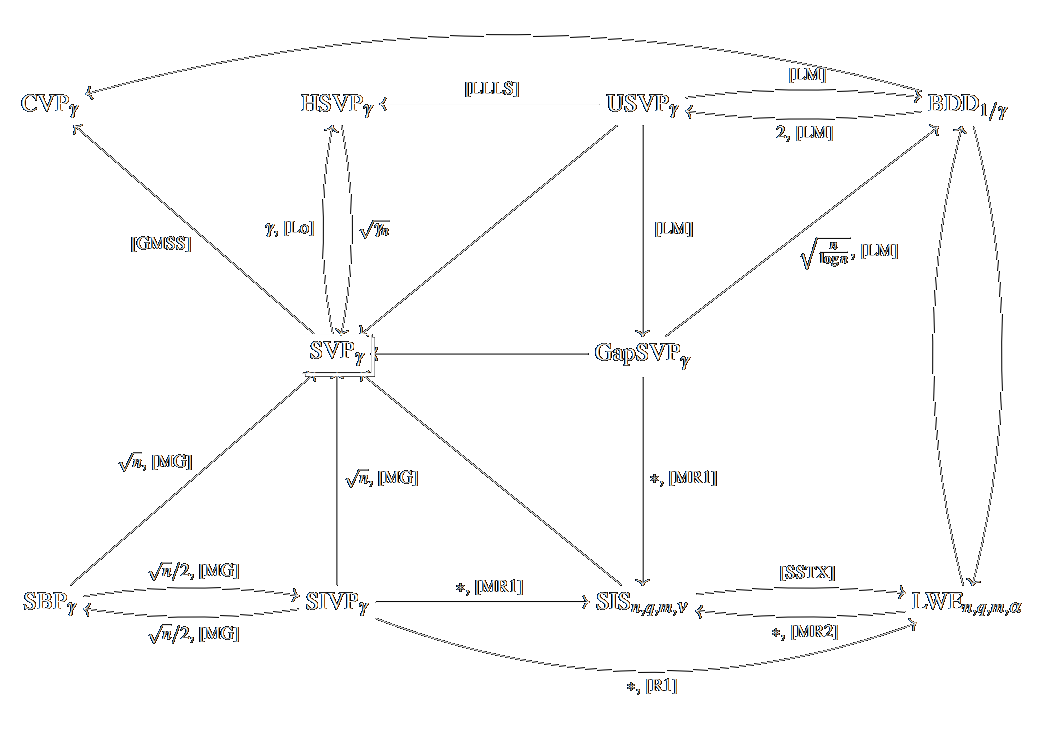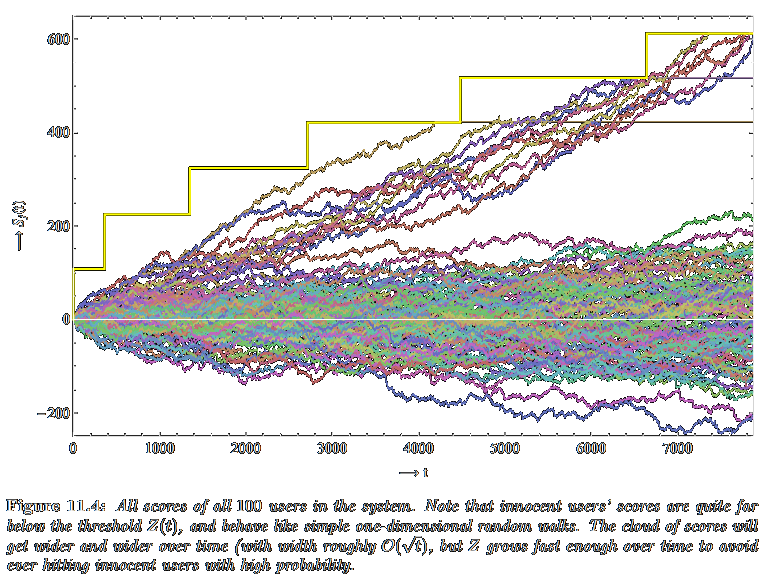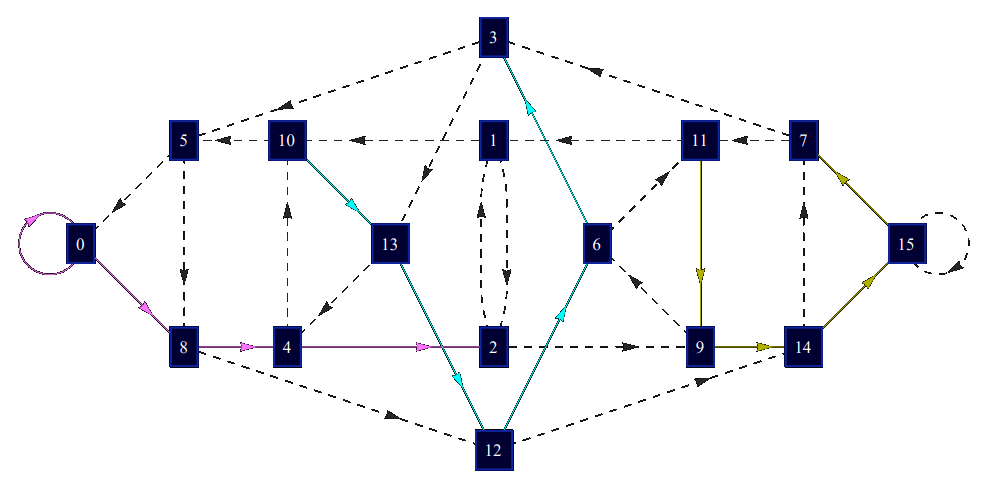Thijs Laarhoven's Homepage (original) (raw)
Welcome
Welcome to my homepage! My name is Thijs Laarhoven, and I am currently a principal cryptographer at NXP Semiconductors in Eindhoven, The Netherlands. Before this, I was a research scientist at TNO, the Dutch Organization for Applied Scientific Research, in The Hague, The Netherlands. Before that, I was a postdoctoral researcher at the Eindhoven University of Technology, in the Netherlands. During this postdoc, I held a temporary visiting scientist position at the University of California, Berkeley, for the Spring 2020 semester. Prior to that, I was a postdoctoral researcher at IBM Research in Zurich, Switzerland. Before that, I completed my PhD at the Eindhoven University of Technology, in the Netherlands. And before that, I completed my MSc with a graduation project at Irdeto< in Eindhoven, The Netherlands.
Research
Quantum-Safe Cryptography
Shor's breakthrough work in the late 1990s demonstrated that if an attacker has a large-scale quantum computer, then many encryption schemes which are in use today (e.g. RSA, Diffie-Hellman) no longer provide security. Although such large-scale quantum computers (likely) do not exist yet, experts predict that within a few decades such computers may well exist, rendering classical forms of encryption insecure. The field of quantum-safe cryptography concerns the development of new cryptographic primitives, which offer security even against such powerful quantum adversaries.
Homomorphic Encryption
Cryptography is commonly used for data at rest (e.g. static data stored on server), and for data in transit (e.g. for securing communication). In an ideal world, however, data remains encrypted and invisible to the outside world even when it is in use. Homomorphic encryption is a special type of encryption, enabling computations to be performed on encrypted data, without having to decrypt data in between. Using this form of encryption can offer tremendous privacy benefits, but work still needs to be done to make this form of encryption practical in real-world applications.
Multiparty Computation
In a world where big data is the norm, many organizations may benefit from being able to use all this data for analytics and insights. However, this data often cannot be used for these purposes due to privacy regulations. Multiparty computation is a technology that lets multiple organizations, who each have partial data sets, to collaborate and perform analytics on their combined data sets, without ever having to disclose their data sets to the other parties. By doing joint computations and exchanging "secret-shared" data, the parties can thereby obtain improved insights.
Secure Machine Learning
With the rise of machine learning, and neural networks overtaking "classical" algorithms in terms of performance and efficiency for various tasks (from playing chess to generating images), we are heading to a world where machine learning will be the norm for arbitrary tasks. This new computing paradigm offers many opportunities, but also various challenges related to private data processing. Various privacy-enhancing technologies can be used to make machine learning more privacy-friendly, and allow the world to use these tools without having to give up their private data.
Statistics
Resume
Summary
Ever since my childhood I enjoyed solving puzzles and mathematical problems, especially those naturally appearing in real life. After graduating in applied mathematics I pursued a research career in lattice‑based cryptography, focusing on the practical hardness of solving hard lattice problems, contributing to constructing efficient lattice‑based cryptographic primitives, and studying better high‑dimensional nearest neighbor methods, which form a key ingredient for state‑of‑the‑art lattice‑based cryptanalysis.
Besides being able to work independently and setting my own agenda, one of my strengths is to find the right perspective for a complex task, and to see how techniques from other areas can be used to solve these problems efficiently. For instance, in my paper at Crypto 2015 I made a new connection between lattice algorithms and nearest neighbor searching, marking the beginning of a long line of new work on this topic.
Experience
Aug 2023 - present
Principal Cryptographer
As one of the leading chip manufacturing companies in the world, NXP is committed to providing strong security solutions on chips, keeping in mind the limited computational capabilities of chips for ensuring security in untrusted environments. Apart from existing threats and solutions, NXP is also working hard on a smooth transition to quantum-secure solutions in the near future. My contributions involve providing expertise on quantum-safe cryptography, as well as getting involved with the transition from theoretical solutions to actual secure implementations of these schemes.
Dec 2021 - Jul 2023
Research Scientist
At TNO, the Dutch Organization for Applied Scientific Research, I contribute to bringing digital security innovations from the lab into the field. This involves going beyond academic research, seeing how technologies can land in society and make a positive impact in government or industry settings, and demonstrating their added value through proof-of-concept demonstrations of the technology. Focus areas at TNO include the migration to quantum-safe cryptography, and finding ways to collaborate on privacy-sensitive distributed data with tools such as multiparty computation and (fully) homomorphic encryption.
Nov 2017 - Nov 2021

Postdoctoral Researcher
For my postdoc at the TU/e I studied topics related to lattices and nearest neighbor searching, in the context of lattice-based (post-quantum) cryptography, and for various applications that require finding similar items in large databases. For the period 2019-2021, this research was funded by a three-year personal NWO Veni innovational research grant of EUR 250.000, which supports outstanding researchers to pursue their line of research for three years at any Dutch university.
Jan 2020 - May 2020

Visiting Scientist
During Spring 2020 I was an invited visiting scientist to the research program titled "Lattices: Algorithms, Complexity, and Cryptography" at the Simons Institute for the Theory of Computing. During this program, researchers visited from all around the world to collaborate on open questions in lattice algorithms and lattice-based cryptography, and to discuss ideas and potential new approaches, until in March 2020 the world went into lockdown, and the program came to an early end.
Mar 2016 - Sep 2017

Postdoctoral Researcher
During my time at the IBM Research lab in Zurich, Switzerland, I studied methods to further improve lattice-based cryptographic solutions, as well as methods that attempt to break these schemes, to get a better understanding of the true security of these lattice-based schemes. I further continued my research on efficient nearest neighbor techniques, which resulted in a nice joint paper on practical and optimal time-space trade-offs.
Oct 2011 - Feb 2016

Doctoral Candidate
In my PhD research, I focused on obtaining a better understanding of, and finding improvements for, various lattice algorithms that lie at the foundation of lattice-based cryptanalysis. Specifically, I focused on lattice sieving methods for the shortest vector problem, and I helped transform sieving from a mostly irrelevant theoretical novelty (2011) to the main algorithm to consider when choosing parameters (2016). The time complexity 20.292n + o(n) from our SODA 2016 paper currently still stands as the asymptotically fastest method for solving the shortest vector problem in high dimensions, while the 20.265n + o(n) from my PhD thesis was long the best quantum complexity for the shortest vector problem, until it was finally improved by Chailloux-Loyer at AsiaCrypt 2021.
Oct 2010 - Jun 2011

Research Intern
To protect copyrighted content against piracy, fingerprints or watermarks are commonly embedded in the content, allowing the distributor of the content to trace a pirate copy to the responsible user. To combat this solution, several pirates may collude, and mix their watermarked copies into a new copy, with a fingerprint which is a mix of the individual pirates' fingerprints. With fingerprinting codes it is possible to find the pirates even if they collude. Various previous solutions were aimed at non-adaptive settings, and during my internship I studied adaptive solutions, leading to the invention of the (patented) dynamic Tardos scheme.
Volunteering
Oct 2020 - Dec 2021

Lichess.org Team Member
Lichess is the second largest online chess site, and each day millions of games are played between users from all around the world. Lichess is free, open-source, ad-free, and exists as a non-profit organization funded solely through donations from users. As a team member I assisted with moderating the chat, finding cheaters, handling ban appeals, developing improved cheat detection tools, scouting and guiding new team members, and outlining the path towards the future for Lichess in terms of policies, governance, goals, vision, and more.
Education
Oct 2011 - Feb 2016

PhD in Cryptography (cum laude)
The research in my PhD at the Eindhoven University of Technology (TU/e) focused on two topics: improving collusion-resistant fingerprinting schemes, and a new direction in lattice sieving algorithms by combining them with nearest neighbor search techniques. Besides the results in these two main topics, I showed how to improve upon the state-of-the-art for group testing and nearest neighbor searching. The resulting PhD thesis titled Search problems in cryptography: From fingerprinting to lattice sieving from December 2015 can be downloaded here.
Sep 2009 - Aug 2011

MSc in Applied Mathematics (cum laude)
I graduated in the group Coding Theory and Cryptology, which is part of the section Discrete Mathematics. In the second year of my Masters I did a final project combined with an internship at Irdeto BV. This internship concluded with writing a Masters thesis, titled Collusion-resistant traitor tracing schemes, which can be downloaded here.
Sep 2006 - Aug 2009

BSc in Applied Mathematics (cum laude)
During the first three years of my studies I took various courses in both Applied Mathematics and in Computer Science. In the first year I obtained propaedeutic diplomas in both Mathematics and Computer Science, and later I also completed a so-called "minor" in Advanced Computer Science. The last part of these three years focused on discrete mathematics, which concluded with a final project and thesis about the Collatz conjecture. This thesis titled The 3n+1 conjecture can be downloaded here.
Skills
- Python
- C
- C++
- Object Pascal
- Java
- Haskell
- HTML
- PHP
- SQL
- CSS
- JavaScript
- Mathematica
- R
- Matlab
- Sage
- Microsoft Office
- LaTeX
- Git
- Dutch
- English
- French
- German
Publications
Filters
All
⭐ Selected
🏆 Awards
👥 Conferences
📄 Journals
📗 Theses
💡 Patents
2023
2022
2021
2020
2019
2018
2017
2016
2015
2014
2013
2012
2011
2010
2009
Lattices
Codes
Quantum
Nearest neighbors
Traitor tracing
Group testing
Collatz conjecture
Chess
Papers
Oblivious graph algorithms for TSP and VRP using FHE and MPC
Sam Leder, Thijs Laarhoven
Preprint, 2023 Preprint, 2023
The irreducible vectors of a lattice
Emmanouil Doulgerakis, Thijs Laarhoven, Benne de Weger
Designs, Codes and Cryptography 2023 Designs, Codes and Cryptography 2023
Human and computer decision-making in chess with applications to online cheat detection
Thijs Laarhoven, Aditya Ponukumati
CG 2022 CG 2022
Lower bounds for nearest neighbor searching and post-quantum cryptanalysis
Elena Kirshanova, Thijs Laarhoven
Crypto 2021 Crypto 2021
Dual lattice attacks for closest vector problems (with preprocessing)
Thijs Laarhoven, Michael Walter
CT-RSA 2021 CT-RSA 2021
Approximate Voronoi cells for lattices, revisited
Thijs Laarhoven
Journal of Mathematical Cryptology 2020 Journal of Mathematical Cryptology 2020
Polytopes, lattices, and spherical codes for the nearest neighbor problem
Thijs Laarhoven
ICALP 2020 ICALP 2020
Sieve, enumerate, slice, and lift: Hybrid lattice algorithms for SVP via CVPP
Emmanouil Doulgerakis, Thijs Laarhoven, Benne de Weger
AfricaCrypt 2020 AfricaCrypt 2020
Evolutionary techniques in lattice sieving algorithms
Thijs Laarhoven
ECTA 2019
Best Paper Award ECTA 2019
Nearest neighbor decoding for Tardos fingerprinting codes
Thijs Laarhoven
IH&MMSec 2019 IH&MMSec 2019
Round5: Compact and fast post-quantum public-key encryption
Hayo Baan, Sauvik Bhattacharya, Scott Fluhrer, Óscar García-Morchón, Thijs Laarhoven, Ronald Rietman, Markku-Juhani O. Saarinen, Ludo Tolhuizen, Zhenfei Zhang
PQCrypto 2019 PQCrypto 2019
Finding closest lattice vectors using approximate Voronoi cells
Emmanouil Doulgerakis, Thijs Laarhoven, Benne de Weger
PQCrypto 2019 PQCrypto 2019
Graph-based time-space trade-offs for approximate near neighbors
Thijs Laarhoven
SOCG 2018 SOCG 2018
Progressive lattice sieving
Thijs Laarhoven, Artur Mariano
PQCrypto 2018 PQCrypto 2018
Speed-ups and time-memory trade-offs for tuple lattice sieving
Gottfried Herold, Elena Kirshanova, Thijs Laarhoven
PKC 2018 PKC 2018
Hypercube LSH for approximate near neighbors
Thijs Laarhoven
MFCS 2017 MFCS 2017
A parallel variant of LDSieve for the SVP on lattices
Artur Mariano, Thijs Laarhoven, Christian Bischof
PDP 2017 PDP 2017
Faster tuple lattice sieving using spherical locality-sensitive filters
Thijs Laarhoven
arXiv:1705.02828 [cs.DS] 2017 arXiv:1705.02828 [cs.DS] 2017
A practical view of the state-of-the-art of lattice-based cryptanalysis
Artur Mariano, Thijs Laarhoven, Fábio Correia, Manuel Rodrigues, Gabriel Falcao
IEEE Access 2017 IEEE Access 2017
Optimal hashing-based time-space trade-offs for approximate near neighbors
Alexandr Andoni, Thijs Laarhoven, Ilya Razenshteyn, Erik Waingarten
SODA 2017
Invited to the ACM Transactions on Algorithms SODA 2017
Sieving for closest lattice vectors (with preprocessing)
Thijs Laarhoven
SAC 2016 SAC 2016
Tuple lattice sieving
Shi Bai, Thijs Laarhoven, Damien Stehlé
ANTS 2016 ANTS 2016
Lower bounds on time-space trade-offs for approximate near neighbors
Alexandr Andoni, Thijs Laarhoven, Ilya Razenshteyn, Erik Waingarten
arXiv:1605.02701 [cs.DS] 2016 arXiv:1605.02701 [cs.DS] 2016
Efficient (ideal) lattice sieving using cross-polytope LSH
Anja Becker, Thijs Laarhoven
AfricaCrypt 2016 AfricaCrypt 2016
Search problems in cryptography
Thijs Laarhoven
PhD Thesis 2016
Graduated cum laude PhD Thesis 2016
New directions in nearest neighbor searching with applications to lattice sieving
Anja Becker, Léo Ducas, Nicolas Gama, Thijs Laarhoven
SODA 2016 SODA 2016
Asymptotics of fingerprinting and group testing: Capacity-achieving log-likelihood decoders
Thijs Laarhoven
EURASIP Journal on Information Security 2016 EURASIP Journal on Information Security 2016
Tradeoffs for nearest neighbors on the sphere
Thijs Laarhoven
arXiv:1511.07527 [cs.DS] 2015 arXiv:1511.07527 [cs.DS] 2015
Practical and optimal LSH for angular distance
Alexandr Andoni, Piotr Indyk, Thijs Laarhoven, Ilya Razenshteyn, Ludwig Schmidt
NeurIPS 2015 NeurIPS 2015
Parallel (probable) lock-free HashSieve: a practical sieving algorithm for the SVP
Artur Mariano, Thijs Laarhoven, Christian Bischof
ICPP 2015 ICPP 2015
Faster sieving for shortest lattice vectors using spherical locality-sensitive hashing
Thijs Laarhoven, Benne de Weger
LatinCrypt 2015 LatinCrypt 2015
Sieving for shortest vectors in lattices using angular locality-sensitive hashing
Thijs Laarhoven
Crypto 2015 Crypto 2015
Asymptotics of fingerprinting and group testing: tight bounds from channel capacities
Thijs Laarhoven
IEEE Transactions on Information Forensics and Security 2015 IEEE Transactions on Information Forensics and Security 2015
Optimal sequential fingerprinting: Wald vs. Tardos
Thijs Laarhoven
IH&MMSec 2015
Best Paper Award IH&MMSec 2015
Finding shortest lattice vectors faster using quantum search
Thijs Laarhoven, Michele Mosca, Joop van de Pol
Designs, Codes and Cryptography 2015 Designs, Codes and Cryptography 2015
Capacities and capacity-achieving decoders for various fingerprinting games
Thijs Laarhoven
IH&MMSec 2014
Best Student Paper Award IH&MMSec 2014
Optimal symmetric Tardos traitor tracing schemes
Thijs Laarhoven, Benne de Weger
Designs, Codes and Cryptography 2014 Designs, Codes and Cryptography 2014
Tuple decoders for traitor tracing schemes
Jan-Jaap Oosterwijk, Jeroen Doumen, Thijs Laarhoven
SPIE 2014 SPIE 2014
Dynamic traitor tracing schemes, revisited
Thijs Laarhoven
WIFS 2013 WIFS 2013
Efficient probabilistic group testing based on traitor tracing
Thijs Laarhoven
Allerton 2013 Allerton 2013
Discrete distributions in the Tardos scheme, revisited
Thijs Laarhoven, Benne de Weger
IH&MMSec 2013 IH&MMSec 2013
The Collatz conjecture and De Bruijn graphs
Thijs Laarhoven, Benne de Weger
Indagationes Mathematicae 2013 Indagationes Mathematicae 2013
Solving the shortest vector problem in lattices faster using quantum search
Thijs Laarhoven, Michele Mosca, Joop van de Pol
PQCrypto 2013 PQCrypto 2013
Dynamic Tardos traitor tracing schemes
Thijs Laarhoven, Jeroen Doumen, Peter Roelse, Boris Škorić, Benne de Weger
IEEE Transactions on Information Theory 2013 IEEE Transactions on Information Theory 2013
Dynamic traitor tracing for arbitrary alphabets: Divide and conquer
Thijs Laarhoven, Jan-Jaap Oosterwijk, Jeroen Doumen
WIFS 2012
Best Paper Award WIFS 2012
Dynamic Tardos traitor tracing schemes
Peter Roelse, Jeroen Doumen, Thijs Laarhoven
Patent 2012 Patent 2012
Solving hard lattice problems and the security of lattice-based cryptosystems
Thijs Laarhoven, Joop van de Pol, Benne de Weger
Cryptology ePrint Archive 2012 Cryptology ePrint Archive 2012
Collusion-resistant traitor tracing schemes
Thijs Laarhoven
Master thesis 2011
Graduated cum laude Master thesis 2011
The 3n+1 conjecture
Thijs Laarhoven
Bachelor thesis 2009 Bachelor thesis 2009
![arXiv:1705.02828 [cs.DS] 2017](http://thijs.com/papers/pnginv/laarhoven17tuple.png)
![arXiv:1605.02701 [cs.DS] 2016](http://thijs.com/papers/pnginv/andoni16.png)
![arXiv:1511.07527 [cs.DS] 2015](http://thijs.com/papers/pnginv/laarhoven15nns.png)
